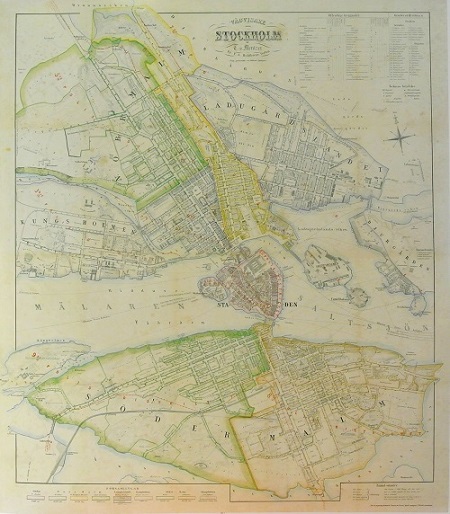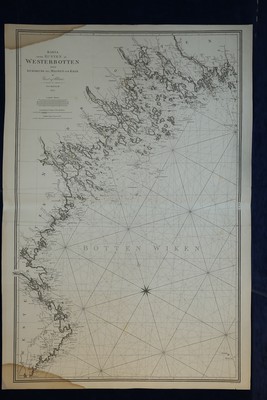1630-1706. Född och död i Paris.
Fransk ingenjör. Efter en tids verksamhet som militäringenjör hos kungen av Portugal återvände han till Paris och blev matematiklärare åt Ludvig XIV:s pager. 1671 utgav han ett militärtekniskt verk, 'Les travaux de Mars, ou l'art de la guerre'. Ett geografiskt verk i 5 band med en mängd kartor och planer, 'Description de l'Univers, contenant les différens systemes du Monde' utkom 1683 och i nyutgåva 1685. 1702 lät han utge 'La Géométrie pratique' i 4 band.
Description de L'Universe
His Description de L'Universe contains a wide variety of information, including star maps, maps of the ancient and modern world, and a synopsis of the customs, religion and government of the many nations included in his text. It has been suggested that his background as a teacher led to his being concerned with entertaining his readers. This concern manifested itself in the charming harbor scenes and rural landscapes that he included beneath his description of astronomical concepts and diagrams. Mallet himself drew most ...
Bland arbeten.
Les travaux de Mars, ou l'art de la guerre.
Description de l'Univers, contenant les différens systemes du Monde.
La Géométrie pratique.
Nouv. biogr. gen.
MERCATOR, GERARD (Gerard de Cremere el. Kremer).
5/3 1512- 2/12 1594. Född i Rupelmonde i Flandern, död i Duisburg.
Belgisk-tysk geograf. Från 1530 studerade han vid universitetet i Leuven under astronomen och kartografen Gemma-Frisius (se denne), och var dennes assistent under arbetet med hans jordglob. Hans första självständiga arbete, en Palestinakarta från 1537, finns det idag bara en känd kopia av. Lika sällsynta är flera av hans andra tidigaste arbeten. År 1541 konstruerade han en jordglob över jordklotet och en himmelsglob, båda på uppdrag av kejsare Karl V. År 1552 slog han sig ned i Duisburg där han sedan fortsatte sin verksamhet. 1569 gav han ut en liten bok om kronologi och samma år kom hans framstående världskarta. 1578 gav han ut Ptolemaeus geografi, kompletterad med sina egna kartor. Detta verk kom i 7 nyutgåvor, den senaste 1794. Mercator är ansedd som den mest betydelsefulla geografen sedan Ptolemaeus. Hans främsta verk, 'Atlas, sive cosmographicae meditationes de fabrica mundi' utkom första gången 1585 och slutfördes 1595, en kort tid efter hans död. Detta arbete var epokavgörande och kom fram till 1642 ut...
Bland arbeten.
Atlas, sive cosmographicae meditationes de fabrica mundi.
(Averdunk. - Bagrow. - Nederl. biogr. X.)
Stor familj av konstnärer och tryckare verksamma i Augsburg.
Johann Balthasar Probst 1504 - 1570.
Georg Balthasar Probst 1673 - 1748.
Johann Friedrich Probst 1719 - 1781.
Jean Michel Probst 28/8 1721 - 1/8 1771.
Georg Balthasar Probst 1732 - 1801.
Johann Michael Probst d.y. 1757 - 1809.
Stockholm - Mentzer ca 1860.
'Karta öfver Kusten af Westerbotten ifrån Bjuröklubb till Malören och Kalix.' - Klint 1833.



